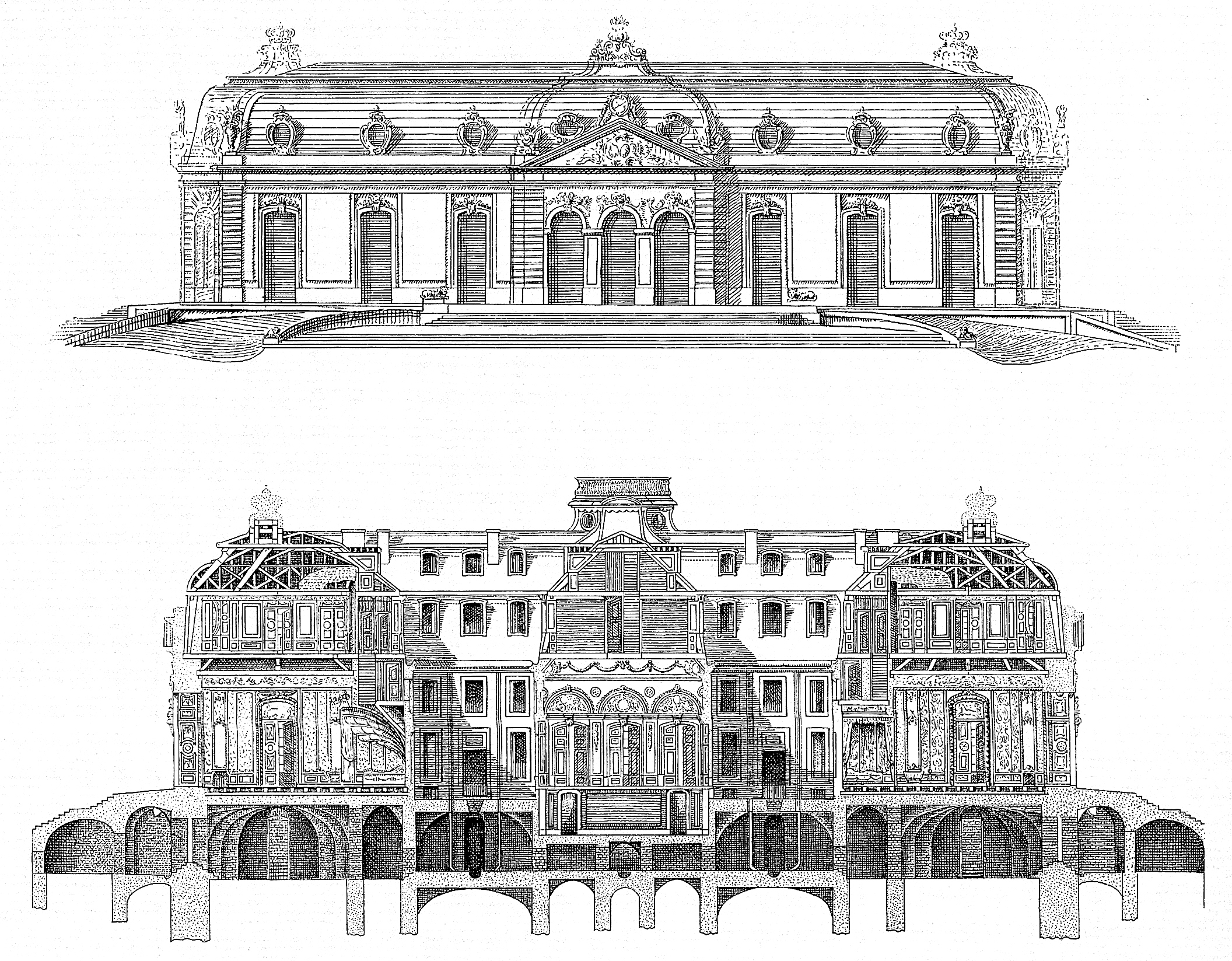Benrath House on:
[Wikipedia]
[Google]
[Amazon]


 Schloss Benrath (Benrath Palace) is a Baroque-style ''
Schloss Benrath (Benrath Palace) is a Baroque-style ''
File:Orangerie Düsseldorf-Benrath.JPG, The old
Schloss Benrath official website


 Schloss Benrath (Benrath Palace) is a Baroque-style ''
Schloss Benrath (Benrath Palace) is a Baroque-style ''maison de plaisance
In Renaissance and Early Modern German architecture, a ''Lustschloss'' (french: maison de plaisance, both equating in English to "pleasure castle/house") is a small country house or palace which served the private pleasure of its owner, usual ...
'' (pleasure palace) in Benrath, which is now a borough of Düsseldorf
Düsseldorf ( , , ; often in English sources; Low Franconian and Ripuarian language, Ripuarian: ''Düsseldörp'' ; archaic nl, Dusseldorp ) is the capital city of North Rhine-Westphalia, the most populous state of Germany. It is the second- ...
. It was erected for the Elector Palatine
The counts palatine of Lotharingia /counts palatine of the Rhine /electors of the Palatinate (german: Kurfürst von der Pfalz) ruled some part of Rhine area in the Kingdom of Germany and the Holy Roman Empire from 915 to 1803. The title was a kind ...
Charles Theodor and his wife, Countess Palatine Elisabeth Auguste of Sulzbach
Elisabeth Auguste of Sulzbach (Elisabeth Auguste; 17 January 1721 – 17 August 1794) was the eldest granddaughter of the Elector of the Palatinate Charles III Philip, and by her marriage to Elector Palatine Charles IV Theodore, Electress ...
, by his garden and building director Nicolas de Pigage. Construction began in 1755 and was completed in 1770. The ensemble at Benrath has been proposed for designation as a UNESCO
The United Nations Educational, Scientific and Cultural Organization is a specialized agency of the United Nations (UN) aimed at promoting world peace and security through international cooperation in education, arts, sciences and culture. It ...
World Heritage Site
A World Heritage Site is a landmark or area with legal protection by an international convention administered by the United Nations Educational, Scientific and Cultural Organization (UNESCO). World Heritage Sites are designated by UNESCO for h ...
.
Buildings
The main building, the central ''corps de logis
In architecture, a ''corps de logis'' () is the principal block of a large, (usually classical), mansion or palace. It contains the principal rooms, state apartments and an entry.Curl, James Stevens (2006). ''Oxford Dictionary of Architecture ...
'', for the Elector Palatine and his wife is flanked by two arched symmetrical wings, the ''maisons de cavalière'', which originally housed the servants. They partially surround a circular pond, the ''Schlossweiher'' (palace pond), in the north. On the southside lies a long rectangular pond, the ''Spiegelweiher'' (mirror pond). From the predescant castle, which stood formerly in the mid of the long rectangular pond on the southside of the palace, is conserved only one of the servant wings, the so-called ''Alte Orangerie'' (Old Orangery
An orangery or orangerie was a room or a dedicated building on the grounds of fashionable residences of Northern Europe from the 17th to the 19th centuries where orange and other fruit trees were protected during the winter, as a very lar ...
).
Museums
The main building ''corps de logis
In architecture, a ''corps de logis'' () is the principal block of a large, (usually classical), mansion or palace. It contains the principal rooms, state apartments and an entry.Curl, James Stevens (2006). ''Oxford Dictionary of Architecture ...
'' is a museum with guided tours. Sometimes music concerts are also performed. The two wings house two museums since 2002: the ''Museum for European Garden Art'' in the east wing and the ''Museum of Natural History'' in the west wing.
Park
It is surrounded by a baroque square hunting park with two crossing diagonal alleys and a circular alley.Orangery
An orangery or orangerie was a room or a dedicated building on the grounds of fashionable residences of Northern Europe from the 17th to the 19th centuries where orange and other fruit trees were protected during the winter, as a very lar ...
See also
*List of Baroque residences
This is a list of Baroque architecture, Baroque palaces and Residenz, residences built in the late 17th and 18th centuries. Baroque architecture is a building style of the Baroque, Baroque era, begun in late 16th-century Italy and spread in Europe ...
References
Schloss Benrath official website
External links
* Houses completed in 1770 Buildings and structures in Düsseldorf Benrath Tourist attractions in Düsseldorf Rococo architecture in Germany Museums in Düsseldorf Parks in Germany Natural history museums in Germany Historic house museums in Germany Gardens in North Rhine-Westphalia Water castles in North Rhine-Westphalia 1770 establishments in the Holy Roman Empire {{NorthRhineWestphalia-struct-stub